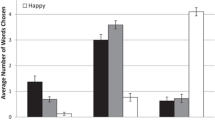Abstract
The present study investigated the correlation between cancer pain severity and mood states, and addressed methodological issues involved in measuring the association between these groups of variables. Five monthly interviews were administered to 95 cancer pain patients; each interview contained four measures of pain severity and the Profile of Mood States (POMS). The relationships between the two sets of variables were assessed using both interindividual (cross-sectional) and intraindividual (within-subject) methods of correlational analysis. Both types of analyses suggested small but significant positive correlations between the pain measures and negative mood states, and inverse correlations between pain and positive mood. The data also indicated that patients reported high levels of pain but reported little mood disturbance. In addressing methodological issues, the study clarified conceptual and computational differences between the two types of correlational analyses and indicated the appropriate applications of each method.
Similar content being viewed by others
References
Bacon, C. B. (1981). Stress and cancer: The state of the art, Part 2.Psychosomatics 22: 207–220.
Barber, T. X., and Hahn, K. W. (1962). Physiological and subjective responses to pain producing stimulation under hypnotically-suggested and waking-imaged “analgesia.”J. Abnorm. Soc. Psychol. 65: 411–418.
Beecher, H. K. (1956). Relationship of significance of wound to the pain experience.J. Am. Med. Assoc. 161: 1609–1613.
Bieliauskas, L. A., and Garron, D. C. (1982). Psychological depression and cancer.Gen. Hosp. Psychiat. 4: 187–195.
Black, R. G., and Chapman, C. R. (1976). SAD Index for clinical assessment of pain. In Bonica, J. J., and Albe-Fessard, D. (eds.),Advances in Pain Research and Therapy, Vol. 1, Raven Press, New York.
Blumberg, E., West, P., and Ellis, F. (1954). A possible relationship between psychological factors and human cancer.Psychosom. Med. 16: 277–286.
Bobey, M. J., and Davidson, P. P. (1970). Psychological factors affecting pain tolerance.J. Psychosom. Res. 14: 371–376.
Bond, M. R. (1978). Psychological and psychiatric aspects of pain.Anesthesia 33: 355–361.
Bradley, J. J. (1963). Severe localized pain associated with the depressive syndrome.Br. J. Psychiat. 109: 741–745.
Chapman, C. R. (1979). Psychologic and behavioral aspects of cancer pain. In Bonica, J. J., and Ventrafridda (eds.),Advances in Pain Research and Therapy, Vol. 2, Raven Press, New York.
Daut, R. L., and Cleeland, C. S. (1982). The prevalence and severity of pain in cancer.Cancer 50: 1913–1918.
Engel, G. L. (1951). Primary atypical facial neuralgia: An hysterical conversion symptom.Psychosom. Med. 13: 375.
Engel, G. L. (1959). “Psychogenic” pain and the pain prone patient.Am. J. Med. 26: 899.
Fox, B. H. (1978). Premorbid psychological factors as related to cancer incidents.J. Behav. Med. 1: 1.
Garron, D. C., and Leavitt, F. (1979). Demographic and affective covariates of pain.Psychosom. Med. 41: 525–535.
Greer, S., and Morris, T. (1975). Psychological attributes of women who develop breast cancer: A controlled study.J. Psychosom. Res. 19: 147–153.
Hilgard, E. R., Morgan, A. H., and MacDonald, H. (1975). Pain and dissociation in the cold pressor test: A study of hypnotic analgesia with “Hidden reports” through automatic key-pressing and automatic talking.J. Abnorm. Psychol. 84: 280–289.
Johnson, J. E. (1973). Effects of accurate expectations about sensations on the sensory and distress components of pain.J. Personal. Soc. Psychol. 27: 261–271.
Johnson, J., Rice, V., Fuller, S., and Endress, M. (1978). Sensory information, instructions to a coping strategy, and recovery from surgery.Res. Nurs. Health 1: 4–17.
Johnson, R. F. Q. (1974). Suggestions of pain reduction and response to cold-induced pain.Psychol. Rec. 24: 161–169.
Kendall, M. G. (1979).Rank Correlation Methods, 4th ed., Griffin, London.
Kissen, D. M. (1966). The significance of personality in lung cancer in men.Ann. N. Y. Acad. Sci. 125: 820–826.
Kissen, R. M., and Eysenck, H. J. (1962). Personality in male lung cancer patients.J. Psychosom. Res. 6: 123–127.
Klusman, L. E. (1975). Reduction of pain in childbirth by the alleviation of anxiety during pregnancy.J. Consult. Clin. Psychol. 43: 162–165.
Kondas, O., and Scetnicka, N. (1972). Systematic desensitization as a method of preparation for childbirth.J. Behav. Ther. Exp. Psychol. 73: 51–54.
Labouvie, E. W. (1980). Measurement of individual differences in intraindividual changes.Psychol. Bull. 88: 54–59.
Leventhal, H., and Everhart, D. (1980). Emotion, pain, and physical illness. In Izard, C. E. (ed.),Emotion and Psychopathology, Penguin Press, New York.
Martinez-Urrutia, A. (1975). Anxiety and pain in surgical patients.J. Consult. Clin. Psychol. 43: 437–442.
McCreary, C. P., Turner, J., and Dawson, E. (1980). Emotional disturbance and chronic low back pain.J. Clin. Psychol. 36: 709–715.
McNair, D. M., Lorr, M., and Droppleman, L. F. (1971).Profile of Mood States, Educational and Industrial Testing Service, San Diego.
Melzack, R., and Wall, P. D. (1965). Pain mechanisms: A theory.Science 150: 971–979.
Staub, E., Tursky, B., and Schwartz, G. W. (1971). Self-control and predictability: Their effects on reactions to aversive stimuli.J Personal. Soc. Psychol. 18: 157–162.
Sternbach, R. A. (1976). Psychological factors in pain. In Bonica, J. J., and Albe-Fessard, D. (eds.),Advances in Pain Research and Therapy, Vol. 1., Raven Press, New York.
Sternbach, R. A., and Timmermans, G. (1975). Personality changes associated with reduction of pain.Pain 1: 177–181.
Timmermans, G., and Sternbach, R. (1974). Factors of human chronic pain: An analysis of personality and pain reaction variables.Science 184: 806–808.
Ward, N. G., Bloom, V. L., and Friedel, R. O. L. (1979). The effectiveness of tricyclic anti-depressants in the treatment of coexisting pain and depression.Pain 7: 331–341.
Weiss, R. (1947). Psychogenic rheumatism.Ann. Intern. Med. 26: 890.
Winer, B. J. (1971).Statistical principles in experimental design, 2nd ed., McGraw-Hill, New York.
Woodforde, J. M., land Fielding, J. R. (1970). Pain and cancer.J. Psychosom. Res. 14: 365–370.
Author information
Authors and Affiliations
Additional information
This research was supported by National Cancer Institute Grant CA-26582 and Contract CN-95491.
Rights and permissions
About this article
Cite this article
Shacham, S., Reinhardt, L.C., Raubertas, R.F. et al. Emotional states and pain: Intraindividual and interindividual measures of association. J Behav Med 6, 405–419 (1983). https://doi.org/10.1007/BF00846327
Accepted:
Issue Date:
DOI: https://doi.org/10.1007/BF00846327




